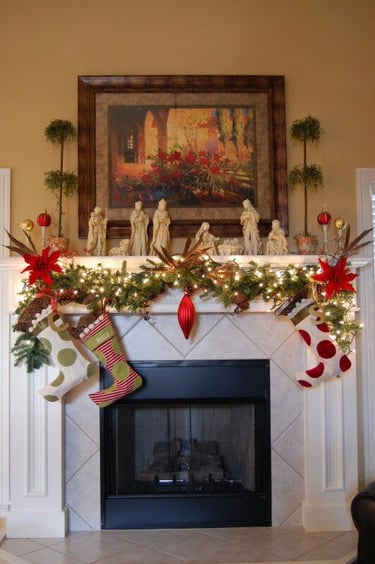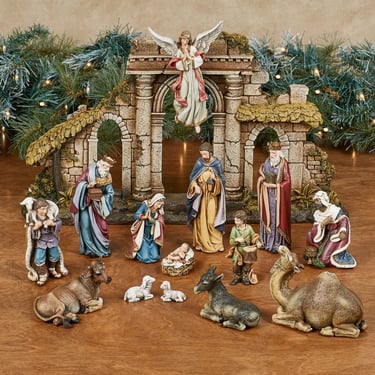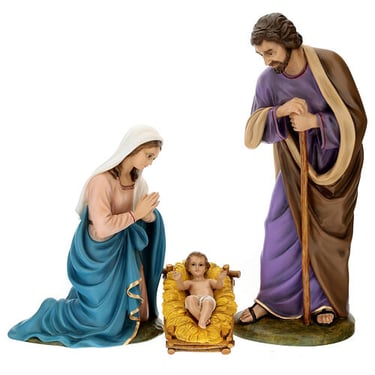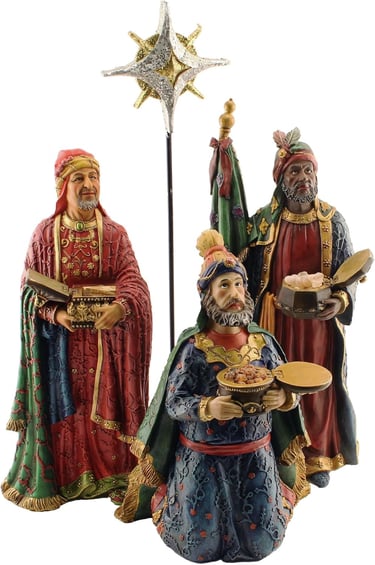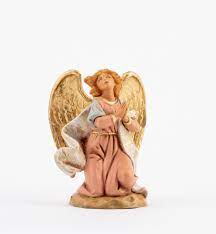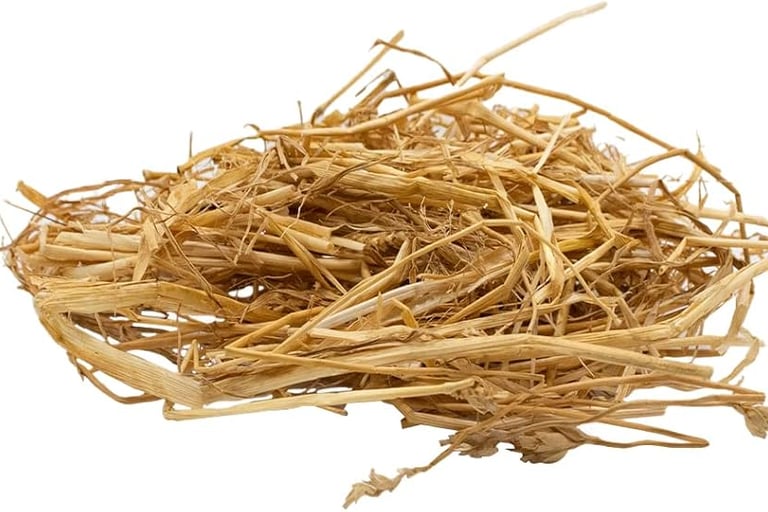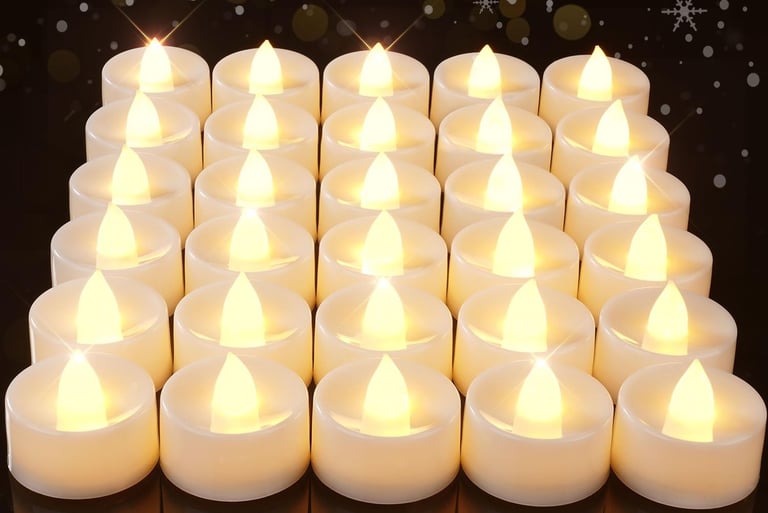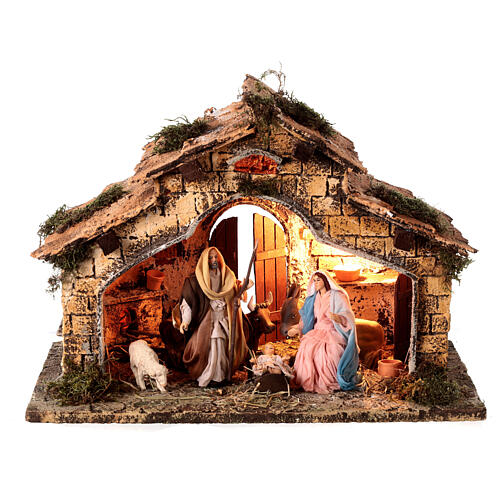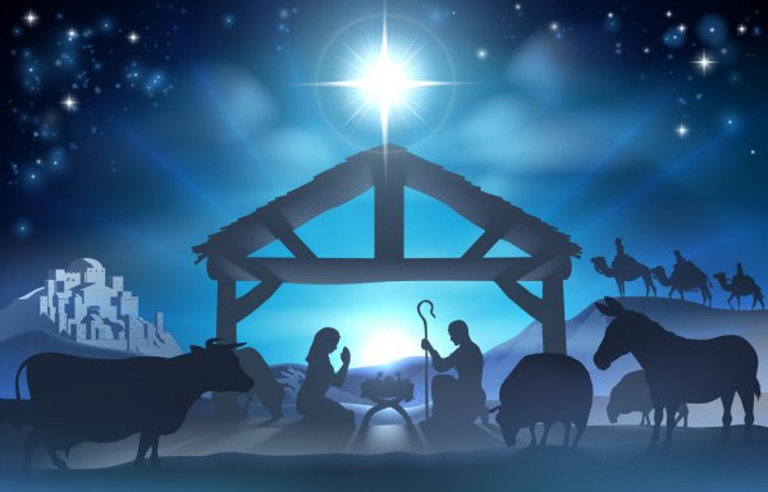Craft Your Own Traditional Nativity Scene: A Complete Guide
Learn how to create a traditional indoor Nativity scene with this easy-to-follow guide. From selecting figures to setting the perfect scene, capture the heart of Christmas in your home.
Grace Callahan
3/25/202512 min read
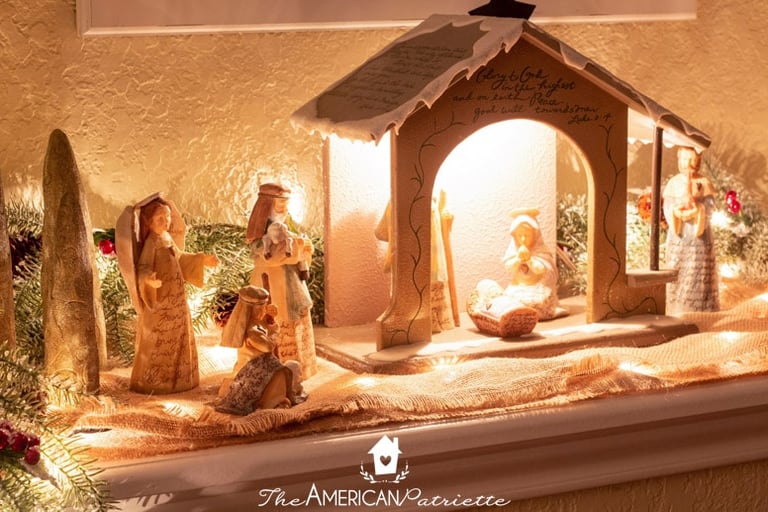

Ever dreamed of creating a stunning nativity scene in your own home?
Introduction:
Setting up a Nativity scene is a cherished holiday tradition that goes beyond simply arranging figurines. It brings to life the profound story of Christ's birth, filling homes with the spirit of Christmas. Whether you’re starting with a fresh display or enhancing an existing one, creating a traditional Nativity scene connects you with the essence of this festive season. This guide will provide clear steps to help you craft a Nativity scene that embodies the love, joy, and hope central to the Nativity story. Let’s explore this delightful holiday activity together.
1. Choose the Right Space for Your Nativity Scene
Setting up a Nativity scene is a beautiful way to bring the spirit of Christmas into your home. Whether it's a cherished family tradition or a new holiday ritual, the space you choose for your Nativity scene plays a crucial role in how it will be appreciated and admired by your guests and loved ones. Here are some practical tips for selecting and preparing the perfect space for your Nativity setup.
Selecting the Location
Choose a Visible Spot
The location of your Nativity scene should be one where it can be easily seen and admired. A mantle, dining table, or corner of the room are all ideal options. This ensures that your Nativity scene becomes the centerpiece of your space, drawing attention and inviting reflection on the meaning of Christmas.Consider the Size of the Space
It's important to match the size of your Nativity scene with the available space. If you have a larger area, such as a wide table or a large corner, you can go all out with an elaborate setup, including intricate details and multiple figurines. On the other hand, if you have a smaller space, you can choose a compact Nativity set or opt for a more minimalist arrangement that still captures the essence of the Christmas story.
Prepare the Area
Clear the Area of Clutter
Before you place your Nativity scene, clear the area of any distractions or unnecessary items. A clean, uncluttered surface will give your Nativity setup the space it deserves to be the star of the room. This also helps create a peaceful and reflective atmosphere that invites contemplation of the birth of Christ.Consider Adding a Backdrop
To make your Nativity scene feel more immersive, think about creating a simple backdrop. This can be something as straightforward as a solid-colored cloth or wooden panels that help frame the scene. If you're feeling crafty, you can even create a painted backdrop that evokes the feeling of the stable or Bethlehem, adding depth and realism to your display.
Setting up your Nativity scene in the right space and taking time to prepare the area thoughtfully can enhance the beauty of the display, allowing your family and guests to fully enjoy the Christmas story and all it represents. Whether you’re opting for a large, elaborate scene or a more minimalist arrangement, the right space will help your Nativity scene shine this holiday season.
2. Gather the Essential Nativity Figures
A well-crafted Nativity scene tells the story of the birth of Jesus Christ, and the figures you include play a crucial role in conveying the story's depth and meaning. Whether you have a traditional set or a more creative version, these figures are essential for bringing the Nativity story to life. Below are the key figures you should consider when assembling your scene.
Key Figures in a Traditional Nativity Scene
Mary and Joseph
The central figures in the Nativity story, Mary and Joseph are at the heart of the scene. Mary, often depicted kneeling beside the manger, represents humility, motherhood, and the blessed Virgin who gave birth to the Son of God. Joseph, typically seen standing or kneeling by her side, symbolizes the faithful protector and earthly father of Jesus. Their presence reinforces the love, devotion, and trust in God’s plan for their lives.Baby Jesus
The focal point of the Nativity scene is, of course, the baby Jesus, placed gently in the manger. This humble feeding trough emphasizes the simplicity of Christ's birth and His arrival as the Savior of the world in the most modest of circumstances. The positioning of Jesus in the center of the scene draws attention to the miraculous event and serves as a reminder of His role in redeeming humanity.The Manger
The manger is a key symbol in the scene, representing the humble beginnings of Christ's life. It is often surrounded by straw or hay to highlight the poverty and simplicity of His birth. This humble setting serves as a contrast to His divine nature, showing that Jesus entered the world without the comforts of wealth or status.
Additional Figures to Include
The Shepherds
The shepherds, often depicted with sheep or other animals, represent the first to hear of Jesus' birth and the message of peace and joy brought by the angel. Placing the shepherds near the manger reflects their immediate obedience and humility, making them an important part of the scene. They symbolize the poor and humble who were the first to witness the birth of the Savior.The Wise Men (Magi)
The three Wise Men, or Magi, are often depicted bringing gifts of gold, frankincense, and myrrh to honor the newborn King. While they may be placed slightly further from the manger, their inclusion is important as it signifies the recognition of Jesus' divinity and kingship by people from distant lands. Their gifts are rich in theological symbolism, representing Jesus’ kingship (gold), divinity (frankincense), and sacrifice (myrrh).
Angels
Including an angel hovering above the scene adds a divine element to the Nativity. The angel’s role is to announce the birth of Jesus to the shepherds, and its presence reminds us of the heavenly message of peace and goodwill that accompanied Jesus' arrival. The angelic figure serves as a symbol of God's presence and the miraculous nature of the Nativity.
Animals
Animals such as donkeys, oxen, and lambs are often added to the scene to reflect the humble setting of Jesus' birth. These creatures symbolize the simple, earthly surroundings that welcomed the Savior of the world. The donkey and ox often represent the gentleness and sacrifice associated with Christ’s mission, while the lamb can be a subtle reference to Jesus as the Lamb of God who came to take away the sins of the world.
By gathering these essential figures, you will be able to create a Nativity scene that not only reflects the biblical narrative but also brings the spiritual significance of Jesus' birth into your home. Each figure plays a role in telling the story, and their thoughtful arrangement will help convey the message of hope, peace, and humility at the heart of the Nativity.
3. Set the Scene with Props and Background
Creating the perfect environment for your Nativity scene involves setting the right atmosphere to reflect the humble beginnings of Jesus. The props and background you choose can enhance the overall visual appeal while also emphasizing the spiritual significance of the Nativity story. Here’s how you can set the scene to make your display truly special:
Creating a Stable Setting
The Nativity scene typically takes place in a stable, symbolizing the humble birthplace of Jesus. You can bring this to life by incorporating rustic elements that evoke the atmosphere of a humble structure.
Wooden Beams and Walls: If you have a larger setup, consider using wooden beams or slats to create the feel of a stable. Wooden structures can be found in craft stores or online, or you could repurpose small wooden boxes or planks for a DIY project.
A Simple Barn or Manger Structure: If space permits, a small barn structure works well to house the figures of Mary, Joseph, and baby Jesus. You could even craft a wooden manger to hold Jesus, adding a touch of authenticity to your display.
Rustic Flooring: Consider laying down straw or hay for the base, creating a soft, earthy surface that emphasizes the humble setting of Jesus’ birth.
Adding Natural Elements
Hay or Straw
Real or artificial straw can be used generously throughout the scene, especially in the manger. If you're using real straw, it can be found at craft stores or gardening shops, or you can use synthetic options for durability. Place the straw around the manger and scatter it around the stable to create an authentic, rustic touch. This symbolizes the simplicity and humility of Jesus' birth.Rocks or Moss
Add some small rocks or moss to your display to introduce an earthy, natural feel. Moss works well as a backdrop on the floor or can be added around the figures to create a sense of natural surroundings. You can find moss or small pebbles at craft stores or even collect them from your garden for a personal touch. These elements help bring the scene closer to the real-life environment of Bethlehem.Lighting
Proper lighting is essential to creating the right ambiance for your Nativity scene. Use small candles or LED lights to bring warmth and softness to the display.
Consider placing tea light candles or battery-operated LED lights near the stable to represent the divine light that shone over the birth of Jesus.
If you want to create a more dramatic effect, add string lights around the scene to subtly highlight certain figures, like the angel or star of Bethlehem.
Lights can also help to create a peaceful and welcoming glow that mirrors the joyous atmosphere of the Nativity.
By incorporating these props and natural elements, you’ll create a visually appealing and spiritually significant Nativity scene that not only reflects the humble origins of Jesus' birth but also invites your family and guests to reflect on the deeper meaning of the Christmas story. The careful arrangement of these elements will add richness to the visual impact of your display, making it an even more meaningful part of your holiday celebrations.
4. Positioning the Figures in a Meaningful Way
Arranging the Nativity figures thoughtfully not only enhances the aesthetic appeal of your scene, but also reflects the spiritual significance of the story. By positioning each figure in a meaningful way, you can tell the story of Jesus’ birth more vividly. Here are some tips for arranging your Nativity scene:
Start with Baby Jesus
The Focal Point
The most important figure in the scene is Baby Jesus, and he should be positioned in the manger as the focal point of the Nativity scene. Centering him in the middle ensures that all other elements of the display are drawn toward the central role of Christ’s birth.Position Baby Jesus gently in the manger, surrounded by hay or straw, emphasizing the humility and simplicity of His birth.
His placement should be at the heart of the display, ensuring that Jesus is clearly the center of attention.
Mary and Joseph
Mary and Joseph should be placed near Baby Jesus, often in an adoring or prayerful position.
Mary is typically depicted kneeling beside the manger, gazing at her child with awe and reverence.
Joseph may be depicted standing or kneeling, often with one hand placed gently on the manger or with a protective stance. This represents the earthly guardianship and faithful protection of the Holy Family.
Arrange the Shepherds and Angels
The Shepherds
The shepherds are essential figures in the Nativity story, as they were the first to receive the message of Jesus’ birth. They should be placed around the manger, perhaps slightly to the side, to represent their approach toward the newborn Christ.Place a few shepherds close to the manger, often kneeling or bowing, to indicate their humble adoration of the Christ child.
Don’t forget to add sheep or other animals to accompany them, enhancing their role as humble witnesses to the birth.
Angels
Angels are often placed above the scene, symbolizing the divine message and the heavenly announcement of Jesus' birth.One angel can be placed near the stable, gently hovering over the figures of Mary, Joseph, and the baby, delivering the message of peace and joy.
The rest of the angels can be positioned above the scene, either floating in the background or arranged in a heavenly chorus to represent the multitude of angels who appeared to the shepherds.
Place the Wise Men
The Magi
The Three Wise Men or Magi are traditionally positioned further from the manger, to represent their long journey from afar. They were not present at Jesus' birth but arrived later, bringing gifts of gold, frankincense, and myrrh.Position the Magi a little further out from the central scene, indicating they are on their way to present gifts to the newborn King. This adds a sense of movement and journey to your display.
You can place one Wise Man closer to the manger, while the others remain a bit further, showing that their gifts are coming but the arrival happens in stages.
By arranging the figures in this manner, you create a narrative flow that guides the viewer’s eye through the story of the Nativity. Each figure is given a meaningful position that reflects their role in the birth of Jesus and their relationship to the sacred event. Whether you choose a traditional setup or add your own touches, the arrangement of the figures ensures that the message of hope, humility, and divine intervention shines through.
5. Add Personal Touches and Finishing Details
Once you’ve set up the main elements of your Nativity scene, it’s time to add personal touches and finishing details that make it truly unique to your family and home. These small additions not only elevate the aesthetic but also bring deeper meaning and warmth to the display.
Incorporate Family Traditions
Reflect Your Family’s Story
Consider adding a personal or unique figure that reflects your family’s traditions. This could be a cherished animal figure, like a family pet, or a piece passed down over generations, such as an antique ornament or hand-carved figure that has special meaning.Adding a small personal item to the scene can make it feel more intimate and connected to your own experiences. Perhaps a figurine from a trip you took or a craft project made by a child could find its place in the scene.
Customize with Messages
A lovely way to make your Nativity scene feel even more meaningful is by customizing it with a small plaque or name tag. A simple message like "Peace on Earth" or "Joy to the World" can add a personal and heartfelt touch to the scene.If you have young children, you might even create custom name tags for each figure, allowing them to feel connected to the characters of the story.
Enhance the Atmosphere with Scents and Music
Add Holiday Scents
Scents can be incredibly powerful in setting the mood and creating a memorable experience. Consider placing a small diffuser or scented candle nearby with classic Christmas scents like pine, cinnamon, or clove.If you prefer something more natural, fresh greenery like pine branches or holly can also bring those festive smells to your home. Just be sure to keep any live plants well away from heat sources, like candles, to ensure safety.
Play Soft Christmas Music
The right music can deepen the atmosphere of your Nativity scene. Soft Christmas carols or hymns can fill your home with warmth and peace. Consider creating a playlist of traditional holiday tunes or soothing instrumental versions of classic carols.Choose gentle, non-distracting music, as you don’t want it to overshadow the peaceful and reflective nature of your Nativity setup. The music should quietly accompany the scene and add to the overall sense of tranquility.
By incorporating personal touches and atmospheric details, your Nativity scene becomes more than just a decoration; it becomes a meaningful tradition that reflects both the story of Jesus’ birth and your own family's journey during the holiday season. Whether through adding family heirlooms, unique figures, or special scents and sounds, these details will make the scene feel more personal, inviting, and spiritually resonant.
Conclusion:
Creating a traditional Nativity scene is more than just an artful display—it’s an opportunity to reflect on the true meaning of Christmas. As you arrange each piece, you are telling the story of Christ’s birth in a way that is meaningful to you and your family. Whether you’re building your scene for the first time or continuing a cherished tradition, it’s a powerful way to connect with the holiday season and the message of hope, peace, and love that it brings. Enjoy the process, and let your Nativity scene serve as a beautiful reminder of the true reason for the season.
